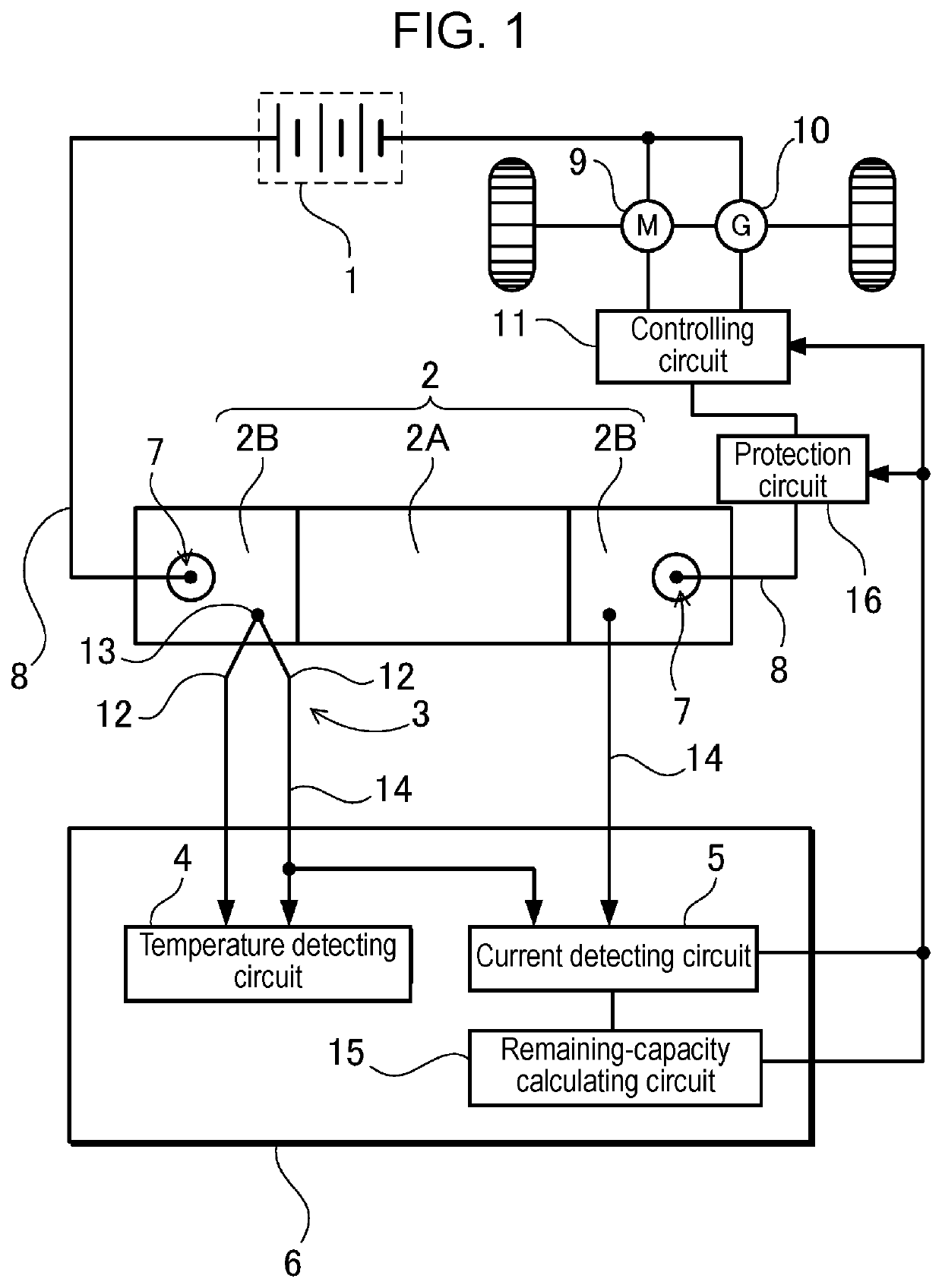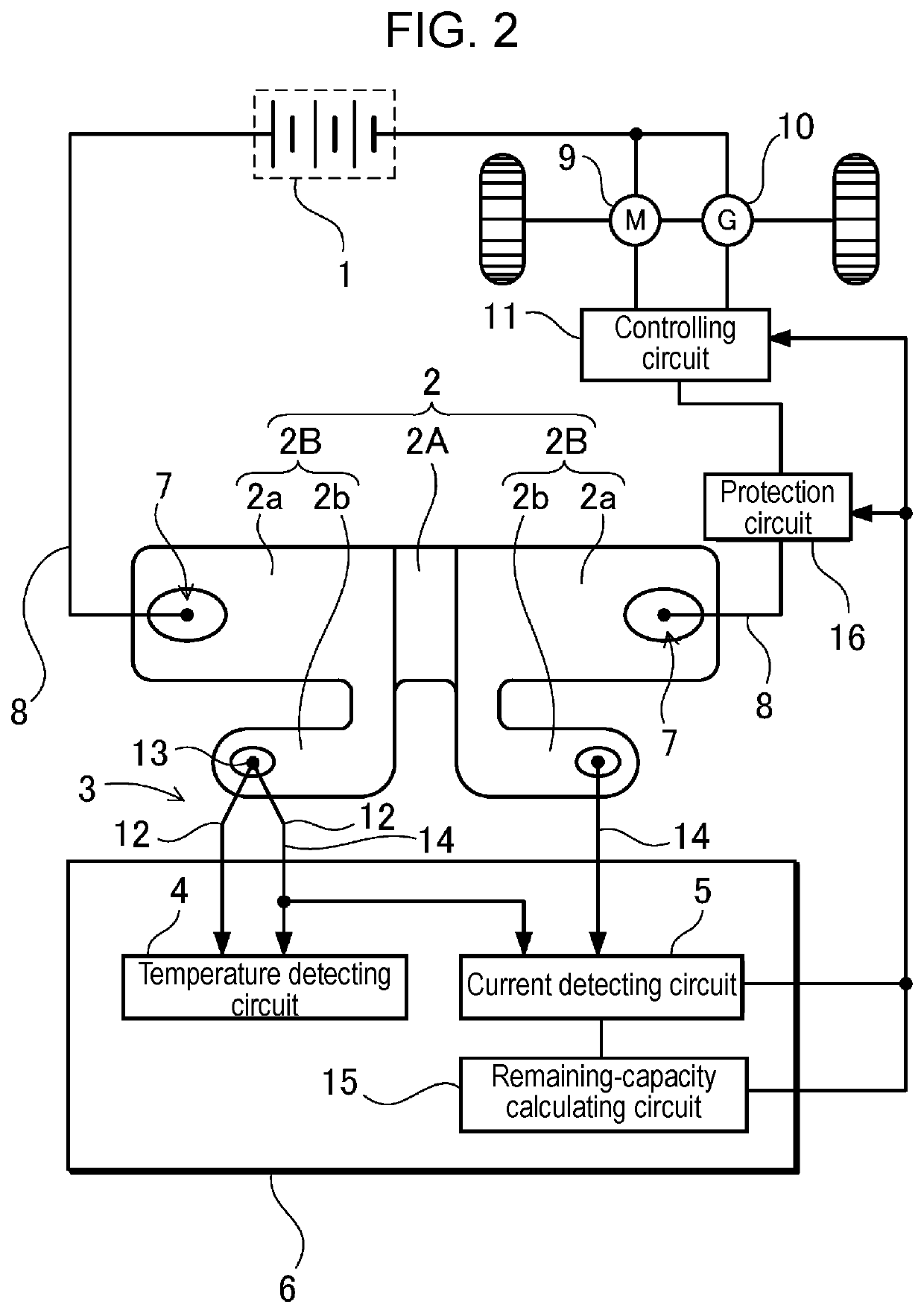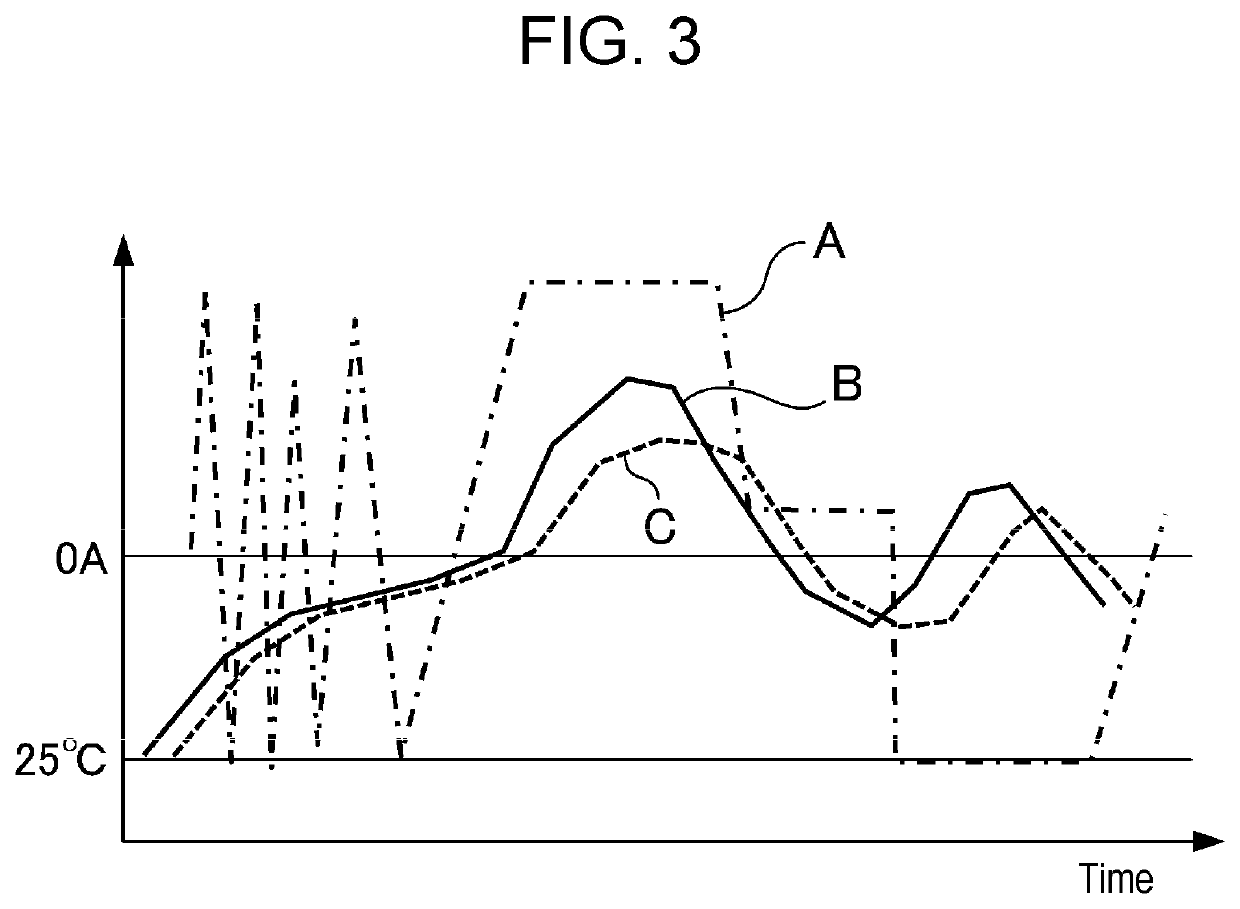Current detector
a current detector and detector technology, applied in the field of current detectors, can solve the problems of insufficient safety, insufficient detection of battery over-charge or over-discharge, and substantial deterioration of battery, and achieve accurate detection, small heat capacity, and correct variation of electric resistance of shunt resistors
- Summary
- Abstract
- Description
- Claims
- Application Information
AI Technical Summary
Benefits of technology
Problems solved by technology
Method used
Image
Examples
Embodiment Construction
[0019]Hereinafter, an exemplary embodiment of the present invention will be described with reference to the drawings. However, the exemplary embodiment described later exemplifies a current detector that embodies a technical idea of the present invention. The present invention is not limited to the current detector described later.
[0020]In the present description, to facilitate understanding the claims, reference marks that correspond to components described in the exemplary embodiment are assigned to components recited in “Claims” and “Solutions to problem and advantageous effects of invention”. However, the components recited in the claims are not limited to the components described in the exemplary embodiment.
[0021]FIGS. 1 and 2 each illustrate a current detector attached to a vehicle. The current detector detects electric current that charges or discharges battery 1 for traveling. The current detector includes shunt resistor 2 connected to battery 1 in series, temperature sensor...
PUM
 Login to View More
Login to View More Abstract
Description
Claims
Application Information
 Login to View More
Login to View More - R&D
- Intellectual Property
- Life Sciences
- Materials
- Tech Scout
- Unparalleled Data Quality
- Higher Quality Content
- 60% Fewer Hallucinations
Browse by: Latest US Patents, China's latest patents, Technical Efficacy Thesaurus, Application Domain, Technology Topic, Popular Technical Reports.
© 2025 PatSnap. All rights reserved.Legal|Privacy policy|Modern Slavery Act Transparency Statement|Sitemap|About US| Contact US: help@patsnap.com



